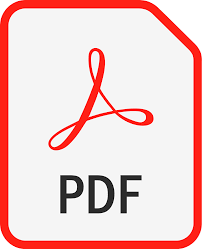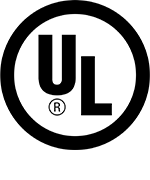 For a PDF Version Click Here
For a PDF Version Click Here
Fire Alarm System
All apartment buildings with four or more units, that do not meet Option 1 as described in Chapter 31 of the Rhode Island Life Safety Code, must have a fire alarm system that is compliant with applicable Fire Life Safety Codes.
All apartment buildings with twelve or more units must have a fire master box that communicates to the fire department when the fire alarm system is activated.
The fire alarm control panel must have a current Uniform Test Report sticker on it. This is proof of the regular inspection of the fire alarm system. A fire alarm company or certified electrician, registered with the RI State Fire Marshal, must test the system either every 3 months or 6 months depending on the number of initiating devices.
The alarm company or electrician must have contact info posted on the fire alarm control panel.
Smoke and Carbon Monoxide Alarms in Apartments
Smoke and carbon monoxide alarms must be in each apartment. They must be interconnected only to the other alarms in the unit either by hardwire or approved wireless devices. They must be compliant with NFPA 72.
A smoke alarm must be inside each bedroom. Additionally, any bedrooms directly off of a kitchen must have a combination alarm (to detect both smoke and carbon monoxide) inside that bedroom. A combination alarm must be mounted outside of all bedrooms, and must not be more than 21 feet from any bedroom.
Smoke alarms must be less than ten (10) years old. Carbon monoxide alarms and combination alarms must be less than eight (8) years old. Check the backside of the alarms for the manufacture date. If there is no date, it’s highly likely that it is too old and needs to be replaced.
All smoke and combination alarms must be in good working order. They must be free from damage. They must not be painted over. Backup batteries installed in each device – alarms must not be sounding its low battery chirp.
All alarms must have either the Underwriters Laboratory (UL) or Intertek (ETL) marks on them. See logos below.


Key Safe / Access Box
A key safe must be installed on the outside of the building, at the door that leads to the fire alarm control panel. Contact the fire department to arrange for one to be purchased if needed.
Means of Egress
Building must have two means of egress. One of which may be a properly maintained existing fire escape or platform and ladder system. Windows to be used with a fire escape must have a clear opening of 5.7 square feet. All locks and locking devices must be permanently removed from the doors to the rooms that provide access to fire escapes.
The hallways and stairways used for egress must have dimensions to support rapid evacuation of the building. Winding stairs may be acceptable means of egress if deemed so by the fire inspector.
Apartment doors and those used in the means of egress must be solid core or steel and have a fire rating of at least 20 minutes. Spring loaded hinges or other self-closing devices must also be in place for those doors.
Walls of the hallways used for egress must be made of plaster and/or sheetrock, in good condition, and has a fire rating of at least 20 minutes.
All combustible covering materials within the hallways of egress, such as paneling or wainscoting, mounted on plaster or sheetrock walls and ceilings, must be made flame resistant by the application of an approved Class A flame-spread rated paint or material.
For apartment buildings with twelve or more units, the means of egress must have emergency lighting. The lights must be connected to a battery so that they turn on when the power goes out. Emergency lighting is not required for apartment buildings with between four and eleven units. However, if the emergency lighting equipment is installed it must work properly or must be removed.
Exit signage, if in place, must be working properly. They must have a battery backup so that they stay lit when the power goes out.
Heating Systems
Furnaces and boilers must be equipped with an approved remote shutoff switch.
Furnaces, boilers or comparable central heating plants above 160,000 BTU input and all floor mounted units require a non-combustible floor by their listing. They must be segregated from the remainder of the building by a one hour rated enclosure or protected by a domestically supplied sprinkler head.
Boiler and fuel-fired heating rooms serving more than a single dwelling unit need to be a room with at least 1 hour fire rating or protected by a domestically supplied sprinkler head.
Fire Extinguishers
Portable fire extinguishers must be conspicuously located along the paths of egress. As an alternative they may be located in the apartments instead if they are installed at the direction of the fire inspector.
Extinguishers must be readily accessible and immediately available in case of fire.
Extinguishers in the paths of egress must be on a hanger or an approved bracket that is mounted to the wall or stored in an approved cabinet or wall recess. The top of the extinguisher must be no higher than 5 feet from the floor, and its bottom must be at least 4 inches above the floor.
They must have a tag attached to each one containing information including, but not limited to, the date of latest inspection or the date the next inspection is due. All portable extinguishers need to have been inspected within the last 12 months.
Sprinklers
Every existing apartment building with more than six units between approved fire barriers with a fire rating of two hours, that was built or converted after June 28, 1990, must have fire sprinkler coverage.
Handrails / Guards
Openings in guards must be designed to prevent loose clothing from becoming wedged in such openings. The ends of handrails on stairways must be returned to the walls so that clothing does not get caught on them.
Inspection Fees
$100 fee for inspection, paid at the time of inspection. If a re-inspection is required an additional fee of $100 is due at the time of the re-inspection. All inspection fees payable by check or money order made out to City of Pawtucket.
Request an Inspection
Request for inspection can be made online through the City’s Portal. Click here to access
